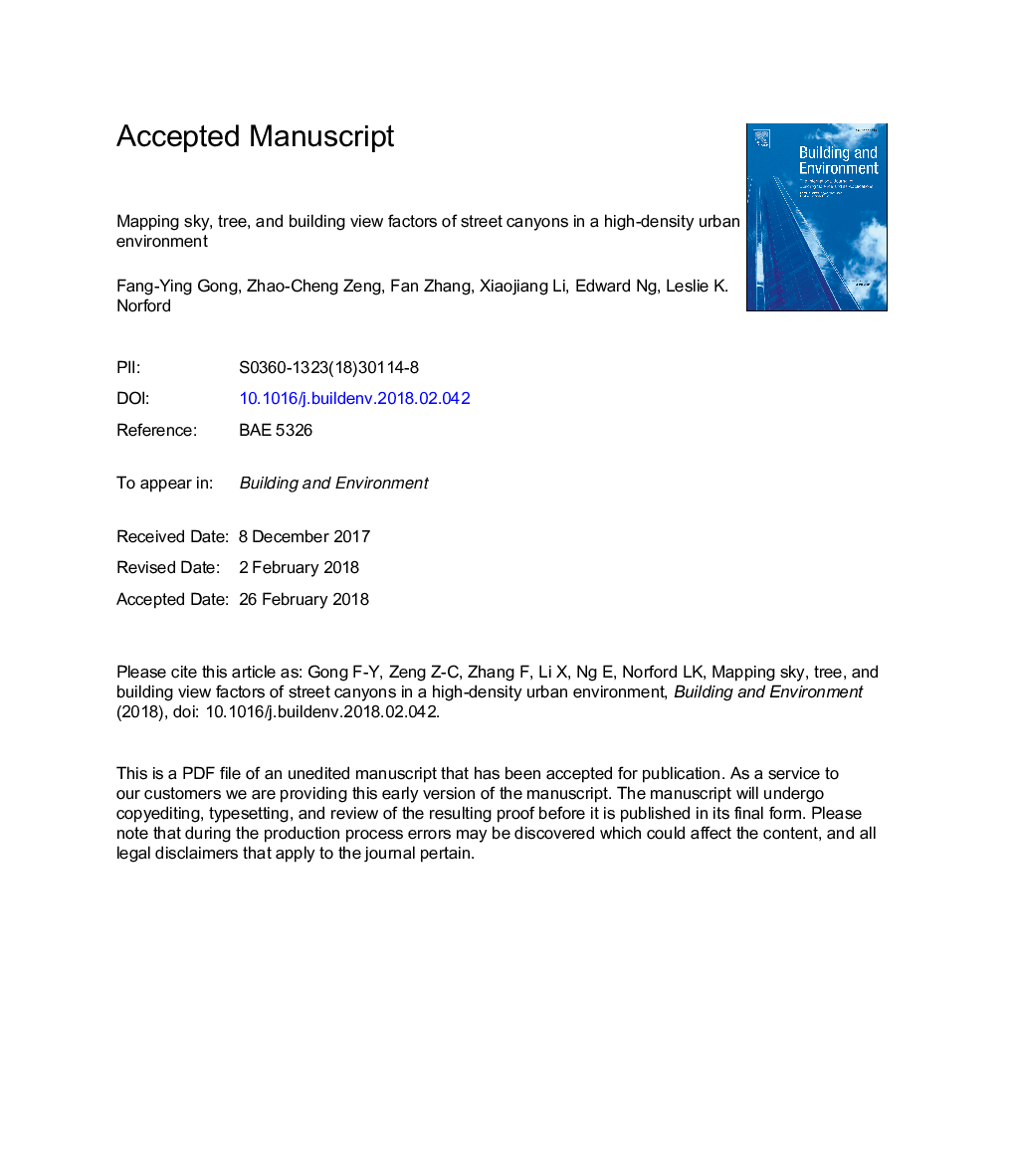| Article ID | Journal | Published Year | Pages | File Type |
|---|---|---|---|---|
| 6697805 | Building and Environment | 2018 | 37 Pages |
Abstract
View factors for sky, trees, and buildings are three important parameters of the urban outdoor environment that describe the geometrical relationship between different surfaces from the perspective of radiative energy transfer. This study develops an approach for accurately estimating sky view factor (SVF), tree view factor (TVF), and building view factor (BVF) of street canyons in the high-density urban environment of Hong Kong using publicly available Google Street View (GSV) images and a deep-learning algorithm for extraction of street features (sky, trees, and buildings). As a result, SVF, TVF, and BVF maps of street canyons are generated. Verification using reference data of hemispheric photography from field surveys in compact high-rise and low-rise areas shows that the GSV-based VF estimates have a satisfying agreement with the reference data (all with R2â¯>â¯0.95), suggesting the effectiveness and high accuracy of the developed method. This is the first reported use of hemispheric photography for direct verification in a GSV-based streetscape study. Furthermore, a comparison between GSV-based and 3D-GIS-based SVFs shows that the two SVF estimates are significantly correlated (R2â¯=â¯0.40, pâ¯<â¯0.01) and show better agreement in high-density areas. However, the latter overestimates SVF by 0.11 on average, and the differences between them are significantly correlated with street trees (R2â¯=â¯0.53): the more street trees, the larger the difference. This suggests that a lack of street trees in a 3D-GIS model of street environments is the dominant factor contributing to the large discrepancies between the two datasets.
Related Topics
Physical Sciences and Engineering
Energy
Renewable Energy, Sustainability and the Environment
Authors
Fang-Ying Gong, Zhao-Cheng Zeng, Fan Zhang, Xiaojiang Li, Edward Ng, Leslie K. Norford,
